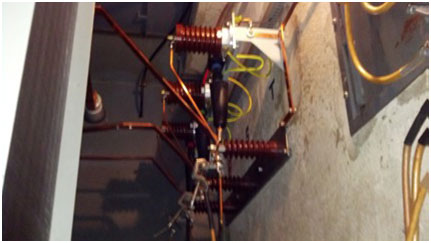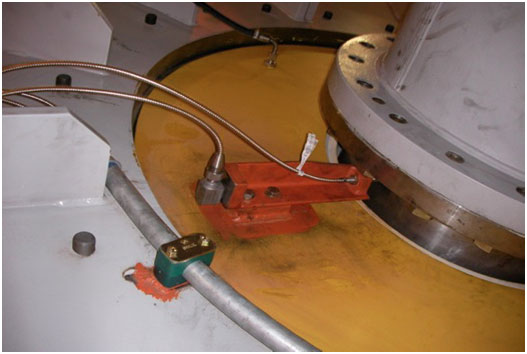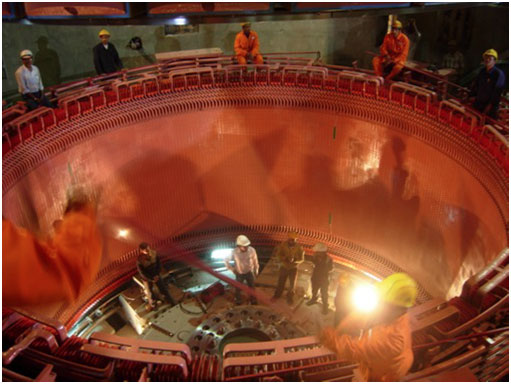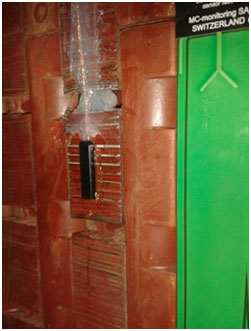Online Partial Discharge Monitoring for Generator & Motor
Application: Online partial discharge measurements detect failures in the stator winding insulation in operation. Online partial discharge measurements can be taken either periodically with a portable partial discharge analyzer or continuously with a permanently installed monitoring system. Partial discharge monitoring is applicable on large hydro-generators or on turbo-generators.
Typical Faults Detections
- Delamination of single conductor to main insulation
- Delamination of the main insulation
- Abrasion of the corona slot protection
Typical Installation: Partial discharge couplers installed on each generator/ motor phase exit.

Shaft and Bearing Vibration for Hydro Generator
Application: Shaft and bearing vibration monitors the vibration amplitude to detect wear of bearings, shaft imbalance and misalignment. The shaft and bearing vibration monitoring is specified in the ISO-7919 and ISO-10816 norms respectively. Plain bearings deterioration and failures can be detected using condition monitoring tools such as shaft center path (orbits) and shaft centerline. Shaft and bearing vibration are applicable on any rotating machines such as hydro turbines, gas turbines, steam turbines, pumps, fans, cooling fan towers.
Typical Faults Detections
- Mechanical unbalance
- Misalignment
- Damages or wear of plainbearings
- Misc. tribological issues on plain bearings
Typical installation: 2 proximity probes or absolute vibration sensors installed at 90° apart located in the radial direction.

Online Airgap Monitoring System
Application: Air gap monitoring measures thedistance between rotor and stator in the hydro generator. Rotor and stator shape and location are affected by operating centrifugal, thermal, and magnetic forces. Off-center or out-of-round conditions might reduce operating efficiency. In more severe cases, they might lead to damage from magnetically induced heating or rotor-to-stator rub.
Typical faults detections
- Rotor-to-stator rub
- Pole mechanical instability
- Loss of operating efficiency
- Magnetic unbalance
- Thermal hotspots
Typical Installation: Depending on the stator size, between 4 to 12 airgap sensors glued equally around the stator core.

Online Magnetic Flux Monitoring
Application: Magnetic flux monitoring measures the flux of each rotor poles to detect defaults in the magnetic field homogeneity. Such failure can be explained by short circuit in a specific pole and might reduce operating efficiency or generate high vibrations due to magnetic unbalance.
Typical faults detections
- magnetic unbalance
- pole mechanical instability
Typical Installation: One magnetic flux sensor installed on the stator.

- Electrical Testing Equipments
- High Voltage AC /DC Testing Kits (HIPOT KITS)
- Ultra Light High Voltage DC Test Sets
- High Voltage AC/DC Dividers
- Primary & Secondary Current Injection Testing Sets
- Vacuum Circuit Breaker Bottle Test Sets
- DC Earth Fault Locator
- Partial Discharge Test Systems
- Transformer Testing
- Circuit Breaker Testing
- Miscellaneous Testing Equipment
- Electrical Safety Equipments
- Condition Monitoring
- Cameras and Imaging Systems
